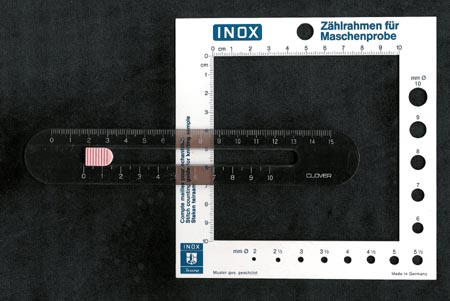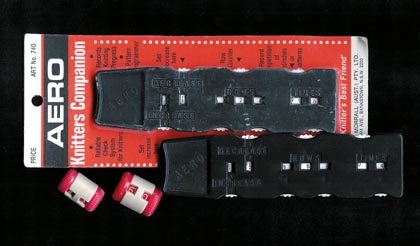2: Needles &
Accessories (cont.)
15.Stitch
markers look more impressive than safety pins, but that is the only
advantage. I have seen them, but I donít remember buying any. Scraps
of yarn can also be used for the same purpose.
16.
You need a ruler, or a tension square
measure to accurately measure tension (see
here). A tape measure
is smooth and often springy, so it can slip on the piece of knitting
and wonít be accurate. If you hold down the tape measure, it could
distort the knitting, which can also affect the accuracy.
I use a big tension square measure that has a needle gauge (see 18)
on one side, and measures rows and stitches at the same time, but
only shows centimetres, so I have to use a tape measure as well for
conversion. A slide tension rule works in the same way as the
tension square measure.

17.
Row counters can be useful if you use them
faithfully, but I prefer to count the rows and stitches on the piece
of knitting (see here). Row counters are essential if you canít
see to count rows or stitches when using a dark, woolly or hairy
yarn, or one that has confusing loops.
I have a super dooper row/decrease/increase/times counter all-in-one
doodad. I remember it was a great help when I knitted a garment
worked in a complicated pattern stitch with very complex shaping
happening at the same time.

NEXT PAGE>>
chapter page: 1 |
2 | 3 |
4 | 5 | 6
| 7 | 8 |
9 | 10 |
11 | 12
|